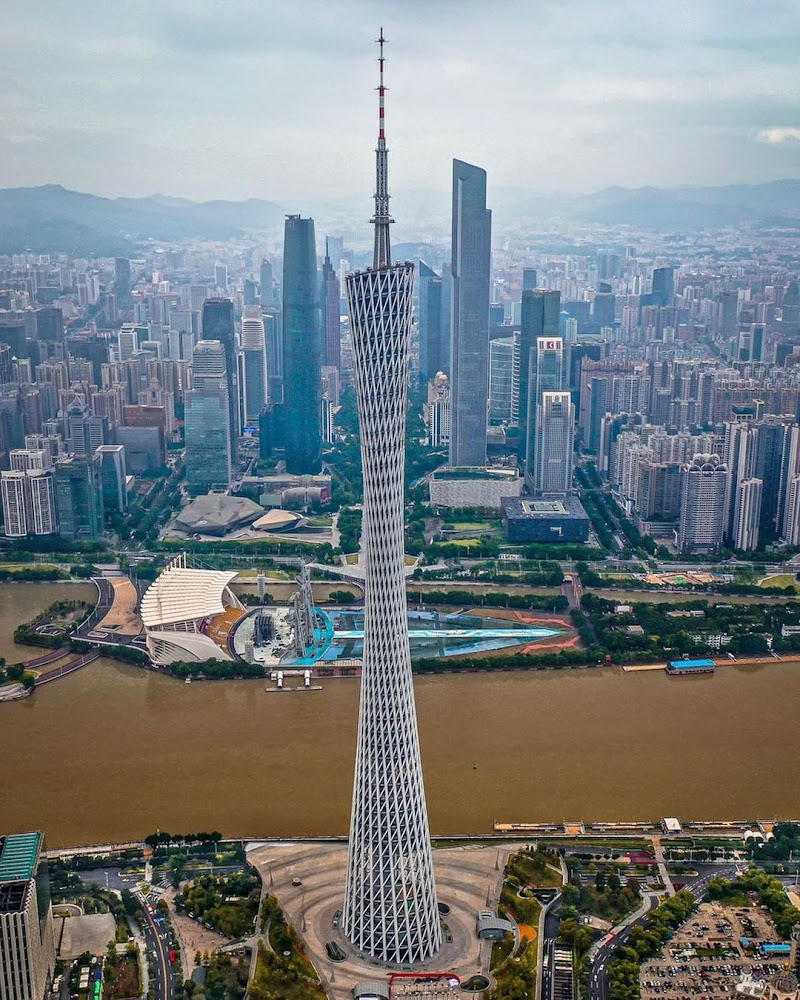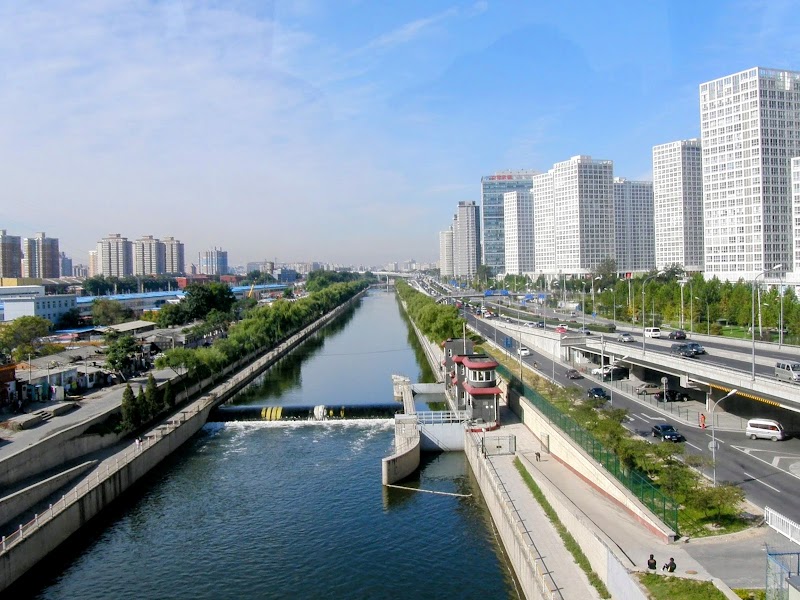Discover the Wonders of China
Imagine journeying through a country vast in both size and cultural depth, spanning over nine million square kilometers, where you can find towering mountains, tranquil lakes, bustling cities, and ancient temples. China is home to one third of the world's UNESCO World Heritage sites, and it is a true treasure trove of natural and cultural wonders waiting to be explored. From the awe-inspiring Great Wall and the Terracotta Army, to the vibrant, bustling streets of Shanghai, China's vastness and diversity promise an unforgettable journey.
With so much to see and do, planning your adventure can seem overwhelming. That's where our comprehensive tourist map comes into play. It's your all-in-one tool to navigate this magnificent land, helping you identify key attractions and chart your own unique path across China. Consider it as your personal guide to discovering the enchanting world of China, offering you the freedom and flexibility to create a journey that's truly your own.
What to See and Do in China
Let's set off on a journey of discovery, where each destination unveils a unique chapter of China's rich tapestry of history, culture, and natural beauty. From the enchanting karst landscapes of Guilin to the bustling food markets of Chengdu, China's diversity is truly awe-inspiring.
Unearth the Enchanting Landscapes of Guilin
Situated in the northeastern part of Guangxi Zhuang Autonomous Region, Guilin is renowned for its breathtaking karst landscapes. Imagine a place where hundreds of limestone peaks rise dramatically from the ground, creating an otherworldly panorama that seems to belong in a traditional Chinese painting. But it's not just the landscapes that will captivate you. As you meander down the Li River, you'll catch a glimpse of rural life with fishermen on bamboo rafts, water buffalos in the fields, and ancient villages nestled between the peaks.
Delve into the Food Culture of Chengdu
If you're a food aficionado, then the vibrant city of Chengdu is a must-visit. As the birthplace of Sichuan cuisine, Chengdu is a gastronomic wonderland where fiery hotpots, mouth-numbing Sichuan peppercorns, and a plethora of street food await you. Make sure to visit Jinli Street, an ancient thoroughfare known for its variety of street food. From the famous Mapo Tofu to the spicy Sichuan Hot Pot, each dish tells a story of the region's culinary heritage.
Explore the Venice of the East: Suzhou
Suzhou, often referred to as the "Venice of the East," is a city where time seems to stand still. With its centuries-old gardens, traditional houses, and a network of canals lined with weeping willows, Suzhou exudes a charm that transports you back to ancient China. Visit the Humble Administrator's Garden, a UNESCO World Heritage site, and marvel at its intricate design and tranquil atmosphere. Don't miss a boat ride along the Grand Canal for a different perspective of this enchanting city.
Discover the Modernity and Tradition of Shenzhen
From a small fishing village to a metropolis, the transformation of Shenzhen is a testament to China's rapid development. It's a city where gleaming skyscrapers meet lush parks, where cutting-edge technology coexists with traditional culture. Explore the Futian District, the city's CBD, where you can witness the city's dynamic urban life. Visit the Dafen Oil Painting Village, where thousands of artists replicate famous paintings, offering a fascinating glimpse into China's creative side.
Experience the Spiritual Solitude of Mount Wutai
Mount Wutai, one of the Four Sacred Buddhist Mountains of China, offers a serene escape from the bustling city life. Blanketed with ancient temples and shrouded in ethereal mists, Mount Wutai provides a deeply spiritual experience. Trek through the mountain paths, where the harmony of nature and spirituality creates an atmosphere of tranquility. Experience the rhythm of monastic life, witness the golden sunrise over the mountains, and feel a deeper connection to the spiritual essence of China.

Booking.com
Practical Information for Traveling in China
Transportation and Mobility
China's extensive and modern transportation network makes exploring the country remarkably convenient. China's high-speed rail system, the fastest and most extensive in the world, connects major cities and regions, making it a preferred choice for inter-city travel. For shorter distances within cities, metro systems are efficient and user-friendly, with signs and announcements in both Chinese and English.
For getting around in cities like Beijing and Shanghai, consider using the growing network of bike-sharing systems. They're economical, eco-friendly, and offer a fantastic way to delve into the local culture. You can easily rent one through various mobile apps, adding to the convenience.
Schedules and Prices
Train schedules are generally consistent throughout the week, with the first train around 6:00 AM and the last one close to midnight. Prices vary according to distance and class, with a second-class seat from Beijing to Shanghai (approximately 5 hours) costing around CNY 550 (USD 85).
Within cities, the metro operates from about 5:00 AM until 11:00 PM. Standard fare starts as low as CNY 3 (less than USD 0.50), making it a highly affordable way to get around.
Safety Tips
China is generally safe for travelers, but like any other destination, it's important to stay alert and aware of your surroundings. Be mindful of your belongings in crowded areas and avoid isolated locations at night. Also, while China is digitally advanced, beware of public Wi-Fi networks; they are often unsecured and can pose a risk to your personal data.
Practical Recommendations
China is vast, and its climate varies greatly from region to region. Generally, spring (April to June) and autumn (September to October) are the best times to visit most regions due to mild temperatures and less rainfall. However, do check the climate of the specific areas you plan to visit before packing your bags.
Lastly, don't forget to download a reliable VPN before your trip as some international websites and social media platforms are blocked in China. This will ensure you stay connected with the rest of the world and share your amazing travel experiences in real-time.

Frequently Asked Questions about China
Here are some additional questions that might come up as you plan your adventure to China, with specific insights and practical tips to enrich your journey.
1. How can I engage with the local communities during my visit to China?
Experiencing China goes beyond its iconic landmarks; it's also about interacting with its people. You can engage with local communities by visiting local markets, participating in community festivals, or even volunteering for a short period at rural schools or farms. Language might be a barrier, but a smile and a friendly gesture can go a long way. Remember to always respect local customs and traditions.
2. Are there any unique festivals in China that I should plan my trip around?
China's cultural richness is beautifully reflected in its numerous festivals. Some unique ones you may want to consider include the Harbin Ice and Snow Festival in January, the Lantern Festival in February, and the Dragon Boat Festival in June. Check the local tourism website for the exact dates as they vary each year based on the lunar calendar.
3. What are some less-known but worthwhile sites to visit in China?
China is brimming with hidden gems waiting to be discovered. Consider the Yellow Mountains (Huangshan) with its stunning sunrises, the ancient water town of Zhouzhuang, or the Rainbow Mountains in Zhangye Danxia Landform Geological Park. These lesser-known sites offer a unique perspective of China's diverse landscapes and history.
4. How should I prepare for altitude sickness if I plan to visit Tibet?
If you're planning to visit high-altitude regions like Tibet, it's essential to take precautions against altitude sickness. Spend a few days at a lower altitude city like Chengdu or Xining to acclimatize, stay hydrated, eat a high-carb diet, and avoid strenuous activities for the first few days. Consult with your doctor about medication like Diamox that can help prevent altitude sickness.
5. What kind of plug adapter do I need for my electronic devices in China?
China uses Type A, Type C, and Type I outlets, so you'll need a universal adapter if your devices use a different type of plug. Also, remember that the standard voltage in China is 220V. Ensure that your devices can handle this voltage to avoid damage.
6. Is tap water safe to drink in China?
As a general rule, it's safer to drink bottled or boiled water in China. While tap water is treated and safe in most cities, it's often not recommended for drinking due to the risk of contamination during distribution. Many hotels provide free bottled water or hot water pots for boiling tap water.

